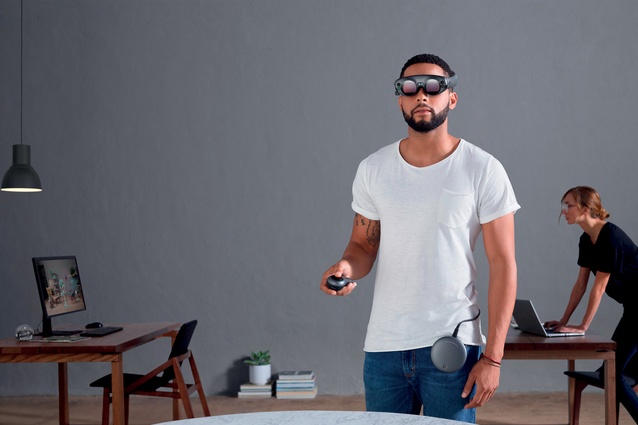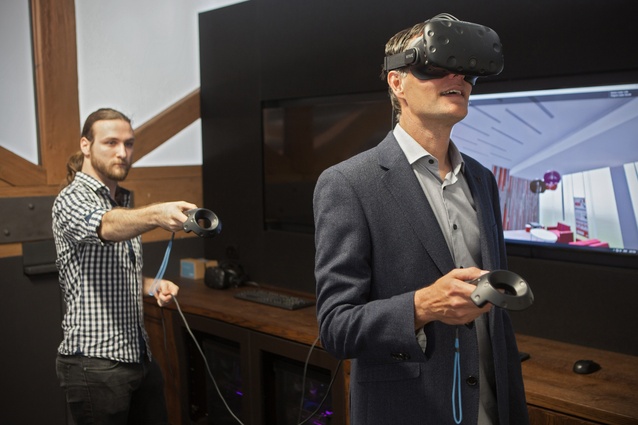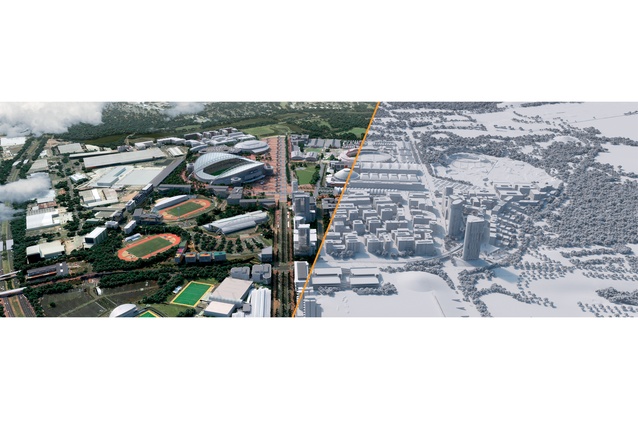Black mirrors: part one
In part one of two, Federico Monsalve explores the potentially disruptive ideas behind Cross Reality.
Architectural visualisations are on the verge of a potentially disruptive shift. Advances and easier access to powerful gaming engines have meant the animation rendering that used to take hours, if not days, can now be done in mere minutes.
Portable computing – in the form of cellphones – continues to become more powerful, with ever-increasing storage/cloud-accessing capabilities and equally impressive graphic processing. These functions are also highly accessible and user-friendly, meaning the consumption of cutting-edge 3D technology and graphics is no longer exclusive to technophiles and gadget hobbyists.
This near-perfect storm has meant that Cross Reality (XR, an umbrella term for the various types of technology that mix computer-generated and real-life input) is ripe for expansion. According to Virtual Gets Real: The Explosion of Cross Reality in New Zealand, a September 2017 report by the New Zealand VR/AR Association and the Ministry of Business, Innovation and Employment, it is estimated that the cross reality sector output in 2019 will be worth around $324 million.
The XR headset industry has also skyrocketed since 2014 when Facebook invested a record-breaking US$2 billion in headset start-up Oculus. Tech and entertainment giants like Samsung, Microsoft, Google and even Wellington’s Weta Workshop have followed suit and bet, astronomically, on the nascent technology.
Although the most sought-after industries for disruption appear to be gaming and entertainment (immersive film and TV), much of the architecture and design world is also future-proofing its studios for XR environments.
Locally, large and small firms have invested, in varying degrees, in such technologies, and studios like Warren and Mahoney, Jasmax, Context, Archaus and Studio Pacific (among others) appear to be leading the charge.
Although there are sci-fi-like hopes that designers will soon be able to create within an XR environment (i.e. moving virtual walls physically by hand within ‘the matrix’), the industry, so far, seems to be focused on two areas: the communication of design and the marketing of yet-to-be-built projects.
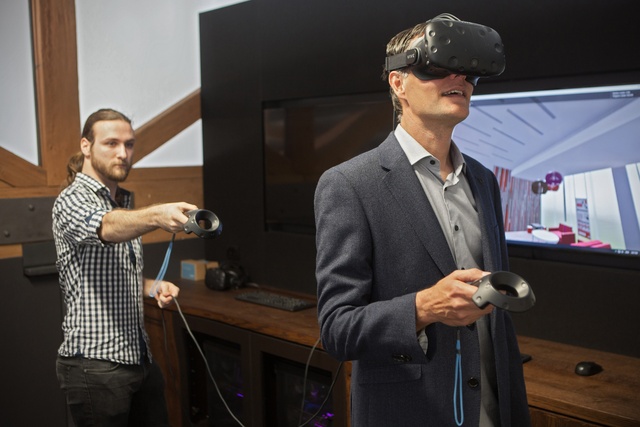
And yes, this 3D technology appears to be a potent tool for expressing pre-construction design ideas to its various stakeholders. According to Virtual Gets Real, XR could lead to early, more-collaborative and transparent design processes and significant savings in remedial work. Everyone from developers through to consultants, engineers, construction crews and, eventually, even consent-granting council bodies could benefit from plans communicated through some form of XR.
The marketing of unbuilt environments is also being viewed as a golden opportunity for the real estate business, facilities management and city planning. XR allows potential buyers and planners to virtually ‘step into’ a building or city quarter before ground has even been broken. This gives developers, realtors, buyers and potential leaseholders the ability to experience and, in some cases, modify detailing and divisions, plan and make more-informed purchase decisions.
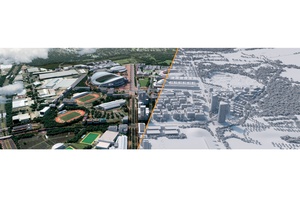
Local XR specialist firm Buildmedia (more on them in part two) has seen the potential in this model and recently unveiled Realspace, an impressive platform that acts as an “immersive and interactive way to showcase and sell future unbuilt architectural developments digitally to prospective buyers”. On a more global scale, multinational commercial real estate firm CBRE and engineering company Aurecon have both recently announced their respective purchases of tech firms specialising in XR applications for the built environment (Floored and Studio Magnified).
Beyond the hype and start-up lolly scramble, the new-ish XR world is still waiting for a few developments to make it fully compatible and truly disruptive for the design and architecture industries. A more seamless translation of BIM files into 3D, headset-ready environments could be a game changer. The ergonomics of the headset have a way to go; there is still a perception that the XR experience is one marred by nausea and near falls. There is progress to be made before XR is a multi-user experience allowing guided tours of buildings rather than lonely strolls through empty, pixelated spaces.
Yet, regardless of its infancy and shortcomings, XR is here to stay and the significance and potential of this tool should not be taken lightly.
Defining Terms
Virtual Reality (VR): VR is an artificial, computer-generated simulation or recreation of a real-life environment or situation. The viewer wears a headset that holds a screen in front of their eyes. It blocks out the world around them, immersing the viewer into a computer-generated, stereoscopic, 3D environment, which they can interact with or explore.
Augmented Reality (AR): AR overlays computer-generated enhancements and 3D visual information on top of a person’s view of the real world. A viewer can still see the real environment around them at the same time so it is an open experience. AR technology can be delivered via mobile devices and head-mounted displays.
Mixed Reality (MR): MR allows digital and physical worlds to combine, creating a new environment, which is anchored to real time. Currently, the viewer dons goggles that superimpose 3D images on top of the real world by shining light into their eyes, fooling the brain into thinking virtual objects co-exist within reality.
Cross Reality (XR): XR is being used increasingly to refer to the ‘virtual to reality continuum’ and incorporates all technologies, including augmented and mixed reality. Many of the sector companies are working actively across all three digital reality technologies and are not bound by delineations of experience between AR, MR and VR.
Read part two, a Q & A with some firms around the country using XR in their work, here.

